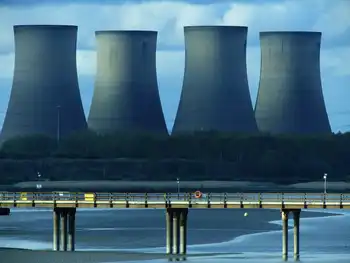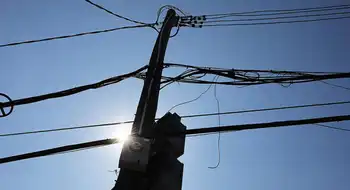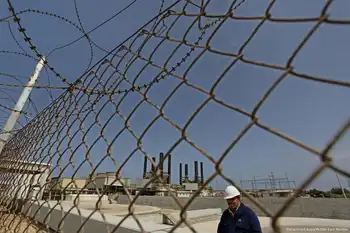Calpine's Metcalf Power Plant in Northern California Online
SAN JOSE, CALIFORNIA - Calpine Corporation's Metcalf Energy Center has begun operation and is delivering up to 600 megawatts of power to the northern California power market. Located in San Jose, Metcalf is the first large power generator in Silicon Valley. It will be the cornerstone of energy supply and reliability for the region.
"The Metcalf Energy Center is an example of cutting edge efficiency, highlighting Calpine's vast experience in power plant construction and operation," said Calpine Chairman, President and CEO Peter Cartwright. "During development of the project, environmental groups - including local chapters of the Sierra Club, the American Lung Association - as well as the NAACP, supported Metcalf, further validating that power generation does not have to come at the expense of the environment."
Metcalf is one of two Calpine natural gas-fueled power plants that will come online in California this summer. The first phase of Calpine's Pastoria Energy Center began operating last month and, by the end of this month, the facility will be supplying 750 megawatts to Southern California Edison's transmission system. Together, the projects will increase Calpine's California project portfolio to 41 power plants and more than 5,250 megawatts. Taken as a whole, Calpine's projects produce enough electricity to satisfy the power needs of more than five million California households.
"Calpine has long considered itself a partner with the State of California in developing innovative and environmentally responsible energy solutions for the people of California," Cartwright added. "Metcalf is Calpine's California flagship project and it reflects our commitment to keeping the state's lights on. More than six years in the making, Metcalf is also a testament to Calpine's vision and the determination of Calpine's people to see it through to successful completion."
Calpine's new facilities are coming online at a time when California is once again facing electricity supply challenges. In a report issued this spring, the California Independent System Operator (California ISO) predicts record power demand will occur in July and August, eclipsing last year's demand record by more than 1,000 megawatts. The California Energy Commission has issued similar projections and expressed concerns about power supplies as well as transmission constraints.
Metcalf also helps address regional energy challenges. The California ISO has stated " ... the Bay Area, in particular the San Jose area, is among the most generation deficient areas in the state..." and that "...Metcalf will provide substantial reliability benefits." In fact, of the estimated 2,200 megawatts that are needed to meet peak power demand in the San Jose area, less than a third are generated locally. Metcalf specifically addresses this imbalance and reduces the vulnerability of the San Jose and Silicon Valley electrical system.
The Metcalf Energy Center makes use of advanced turbine technology, and the project's "combined-cycle" design allows Metcalf to consume up to 30 percent less natural gas as compared to older power plants in the region. This improvement in operating efficiency means that less fuel is burned and less greenhouse gas is emitted per megawatt generated compared to coal-fired or older gas-fired power plants.
Calpine Energy Services, Calpine's power marketing management arm, will market electricity from the facility through a variety of long, intermediate, and short-term contracts. Prospective buyers may include Pacific Gas and Electric Company as well as energy service providers, retail customers, and municipal utilities.
Related News

Germany turns to coal for a third of its electricity
BERLIN - Germany is relying on highly-polluting coal for almost a third of its electricity, as the impact of government policies and the war in Ukraine leads producers in Europe’s largest economy to use less gas and nuclear energy.
In the first six months of the year, Germany generated 82.6 kWh of electricity from coal, up 17 per cent from the same period last year, according to data from Destatis, the national statistics office, published on Wednesday. The leap means almost one-third of German electricity generation now comes from coal-fired plants, up from 27 per cent last year. Production from natural…




